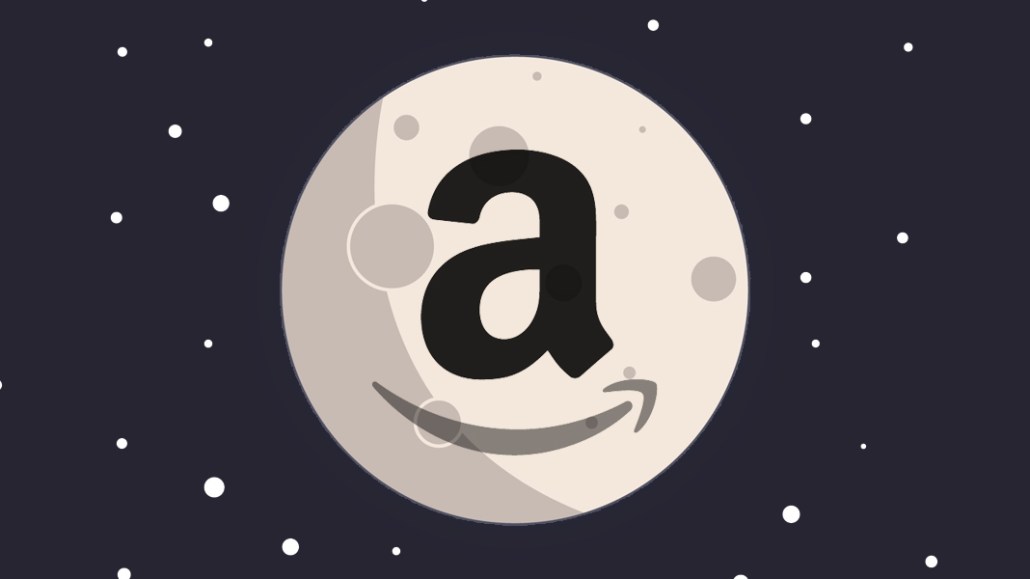Insights from CTV leaders at Dentsu, Horizon Media and more

Digiday Media is launching a monthly Amazon briefing newsletter, where we’ll compile the latest news about the retail juggernaut from Digiday, Glossy and Tearsheet. Sign up here to get the monthly briefing in your inbox.
If 2017 was about the hype around Amazon’s ad business, then 2018 will be its reality as the online giant tries to convert that interest from advertisers into revenue. The retailer’s ad business is tiny compared to Google and Facebook, but it is quickly carving out a place for itself alongside the online duopoly. Here’s how its stake in online media will materialize, in four charts.
Eyes on Amazon
Brands may not be ready to spend big on Amazon in the same way they do on Google and Facebook, but they are taking it seriously. Nearly two-thirds (63 percent) of 250 business-to-consumer marketers surveyed in the U.S. said they would increase their spending on Amazon over the next year, according to a report by GroupM’s Catalyst done in September. Fifty-four percent of respondents said they would increase their Google budgets, while 53 percent said they planned to spend more on Facebook ads.
Amazon’s growing share of budgets is in part due to its being new to many advertisers. Just 15 percent of the marketers interviewed said they use all of Amazon’s advertising products, while only 17 percent said they have a fully defined strategy.

Amazon’s ad business will surpass Twitter and Snapchat
The site’s ad revenues in the U.S. are forecast to hit $1.65 billion in 2017, significantly less than that of Google ($35 billion) and Facebook ($17 billion) but ahead of Twitter ($1.21 billion) and Snapchat ($642 million), per eMarketer. Advertising on Amazon is rising faster than almost every other big ad publisher, according to eMarketer, with a 48.2 percent rise set for 2018. In 2019, Amazon will take $3.19 billion in net U.S. digital ad revenues, equating to around 3 percent of total digital ad spending.

Amazon looms large in the purchase process
Amazon is becoming as ubiquitous to product searches as Google is to general online queries. While more shoppers in the U.S., Germany, the U.K. and France use Google (85 percent) for product research and shopping, 56 percent use Amazon as the starting point for product research, according a survey in September of 3,100 shoppers by technology platform Kenshoo. Even if shoppers find a product that’s suitable on another site, more than half (51 percent) admitted they will usually check Amazon to do more research before making a purchase.

Agencies are boosting spending on Amazon
WPP CEO Sir Martin Sorrell has been one of the most prominent voices on Amazon in 2017. Hopeful that the shopping giant will break Google and Facebook’s stranglehold on online media, Sorrell and his peers have maneuvered their agencies to win more of the budget going into the channel. That shift is reflected in WPP’s plan to increase its spending on Amazon by 40-50 percent, to around $300 million, according to The Wall Street Journal. Similarly, French holding company Publicis will increase its year-over-year spending on Amazon by 50 percent to $300 million in 2018. Omnicom is set to double its year-over-year spending on Amazon next year to around $200 million.
Most advertisers want to test the impact of Amazon ads, said Andreas Reiffen, CEO at performance marketing specialist Crealytics. “We’re mainly being asked two questions: What return on ad spend can we expect?” he said. “And how much incremental uplift can we generate by spending additional advertising money on Amazon?”

More in Media

Digiday+ Research: Publishers pull back their dependence on digital revenue
After a year in which publishers shifted their revenue dependence away from traditional channels and toward digital channels, 2025 has seen a shift back toward more of a balance between traditional and digital revenue sources.

LinkedIn makes it easier for creators to track performance across platforms
Creator data is becoming more accessible to third-party vendors via a new API — another step in LinkedIn’s creator platform evolution.

Ad Tech Briefing: The ‘plumbers’ posing as the unlikely saviors of the internet
After several false dawns, can Cloudflare’s ‘anti-AI scraping tool’ finally offer publishers a road to commercial redemption?





